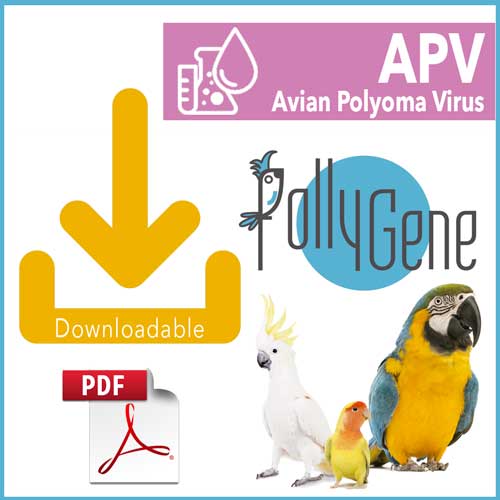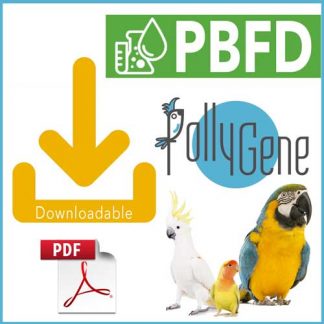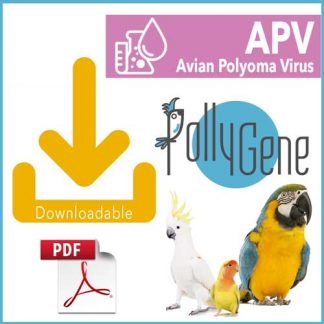Description
What is polyomavirus in birds?
Avian Polyomavirus APV also knows as (Papovavirus, Budgerigar fledgling disease, Psittacine polyomavirus) is a deadly infection that affects many of the bird’s body parts and organs simultaneously. This infection affects caged birds, especially those from the parrot family. Young birds from newborn to juveniles (14-56 days), are the birds most at risk and is usually fatal. Though not proven, adult birds are thought to form some immunity to polyomavirus.
Primarily affects young birds. There are two primary forms of the disease based on species affected: budgerigar fledgeling disease and a non-budgerigar polyoma infection. Both are characterized by peracute to acute death of pre-weaned neonates. Adult birds typically are resistant to infection; they will seroconvert and shed the virus for up to 90 days, then clear the infection. The incubation period is 7–10 days.
The polyomavirus of pet birds belongs to the family Papovavirus, the same group of viruses that causes benign skin tumors (papillomas or warts) in birds. Polyomavirus can cause benign feather lesions in budgies (the so-called French molt or Budgerigar Fledgling disease) or acute death. Species particularly susceptible to polyomavirus infection include budgies and members of the parrot family; to a lesser degree, canaries and finches are also susceptible.
Avian polyomavirus is a very serious disease in birds causing depression, dehydration, and haemorrhaging under the skin. It is of particular interest to anyone who breeds birds in captivity, as most deaths occur in new hatchlings and birds up to five months of age. Older animals can contract it, but they are usually symptom-free, and simply become carriers. These carrier birds are a huge risk to breeders, as when they are shedding the virus, they can infect and kill hatchlings within the aviary and beyond.
Symptoms of Polyomavirus
From the time the bird contracts the infection, it takes about 10-14 days for displaying symptoms. However, a bird may or may not show any sign of the polyomavirus infection. If the symptoms are displayed in your bird, its death may be imminent — usually within one or two days. Since the infection lowers the immunity of the bird, it can be susceptible to other viruses, bacteria, fungi and parasites, which can lead to secondary infection and death.
There are different strains of the virus that can cause different clinical signs. Some birds recover from the infection but are left with abnormal feathers (Budgerigar French Molt) Most commonly, birds die quickly with no clinical signs. Some infected birds may show:
- A swollen (distended) abdomen
- Loss of appetite and anorexia
- Regurgitation
- Vomiting
- Diarrhea
- Dehydration
- Weight loss
- Depression
- Feather abnormalities
- Excessive urination
- Difficulty breathing
- Bleeding (hemorrhages) under the skin
- Listlessness
- Tremors for 12-48 horas before death.
- Paralysis
Mortality can be high, reaching 100% in birds less than 15 days old. Birds that recover probably remain carriers of the virus and can shed it despite not showing signs of illness.
“Mortality can be high, reaching 100% in birds less than 15 days old”
Many birds which die from polyomavirus do so without showing any symptoms. Others will show signs of depression, dehydration, and skin haemorrhaging. They may vomit, have diarrhoea, excessive urine output and even tremors and paralysis. It is because there are so many possible signs of the disease that it is missed in the vital first days, being taken for something else. Yet others will have minor symptoms and appear to recover, only to die sometimes months later by a swift and savage recurrence of the disease.




Reviews
There are no reviews yet.